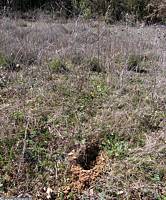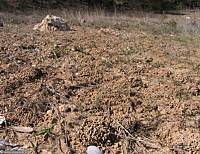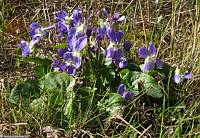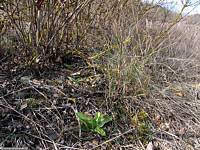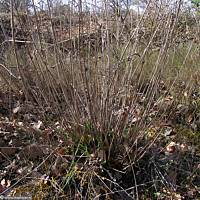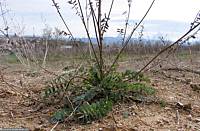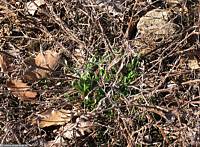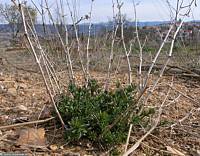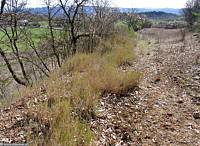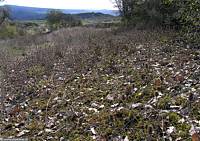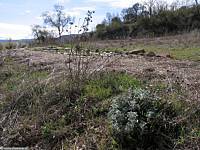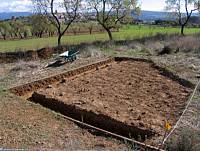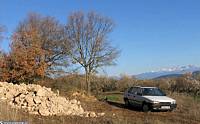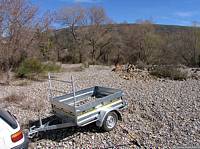|
|
Nature
Switched On
|
|
|
introduction |
2008 March 20.21 & 22, Thursday, Friday & Saturday Special Easter surprise: this is how we found 6 plants we planted last week. Without much doubt the work of a badger or wild pig who just wanted to have a bite at the young fresh leaves. The roots hadn't had the time yet to develop so the plants were easily lifted. I must admit that some of my deeply buried hunter instinct surfaced but was readily dismissed together with reflections about fencing the whole terrain. The fact remains that probably the same animal is responsible for the uncountable holes in the ground destroying the valuable vegetation layer. These holes are related to another but much more benign 'tillage' of the soil: the heaps of earthworms, the same animals the badger is looking for.
|
|
|
Apart from the apparent damage, these activities
will also introduce seeds from outside and create special
germinating conditions. |
Endless worm heaps on the higher
western terrace. Thursday 11:46 |
|
|
Spring is here and this Violet decided to celebrate it. Last year I had observed it outside the terrain at a distance of only 20 meters but now it appeared also on the terrain on two different places.
Many other plants are waking up although not so prompt with flowers
as the Violet.
|
||
|
Viola odorata (o willcommmi?)
in the half shadow on the central terrace. |
||
|
A new siting of Lady orchid (Orchis
purpurea) on the central terrace, below some Dogwood shrubs. |
||
|
In the not mown areas many plants still have their last year's stems, clearly having a function in the dissemination of their seeds. It offers a special sight, not something you will see in a well kept ornamental garden. At least insect, spiders and birds will appreciate these structures for lodging and nest building. Here a graphical account of some examples.
|
||
|
Sanguisorba minor. |
Cephalaria leucantha. Saturday 10:08 |
|
|
Euphorbia cyparissias. |
Ononis natrix.
|
|
|
Galium fruticescens. |
||
|
Two photographs from the highest southern terrace. Brachypodium
retusum is a perennial grass that must be greatly valued for
its soil protecting and consolidating properties especially on
terraces like these.
The persistence of the dry 'beehives' of Prunella laciniata is remarkable. Young green leaves are appearing at their base in the moss layer. |
||
|
In the centre a line of Brachypodium
retusum. |
||
|
Prunella laciniata. Looking south-east. Saturday 9:28 |
||
|
White (or Common) Horehound (Marrubium vulgare) has never been away and has managed to maintain this aspect throughout winter.
In the mown area Bladder Campion (Silene vulgaris) is standing out and seems to take advantage of the mowing.
|
||
|
Marrubium vulgare in the lower
right corner near the pond. |
||
|
Mown area on the lower northern
terrace with the light green patches of Silene vulgaris. Looking north-west. Saturday 9:58 |
||
|
The foundation trench for the garden shed.
The bottom is well tamped and has a slight slope to drain the water
to the lowest point. |
|
|
|
The house will be built according to ecological and bioclimatic principles. Our architect has finished the official project and it is now in the hands of the authorities for approval. When it is approved we will of course comment more about it. The garden shed is a minor project of 20 m2 and has recently been approved. |
||
|
So we started with t Gravel is abundantly available at the nearby river. Three trips sufficed to get the necessary 1.5 tons (almost 1 m3) of gravel.
|
||
|
The heap of stones at the entrance. Looking north-west. Photograph taken on 2 March 8:45 |
||
|
A bank of gravel nicely sorted
by the river itself. Our terrain is just at the other side of the mountain. Saturday 11:33 |
||
|
introduction
|
|

